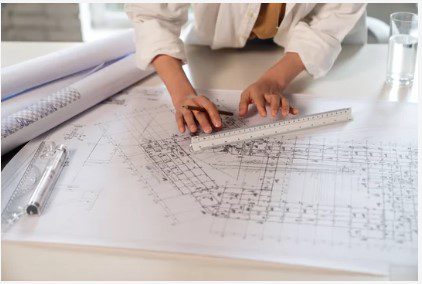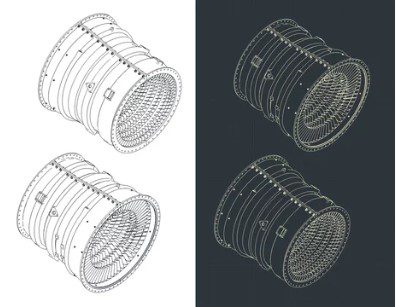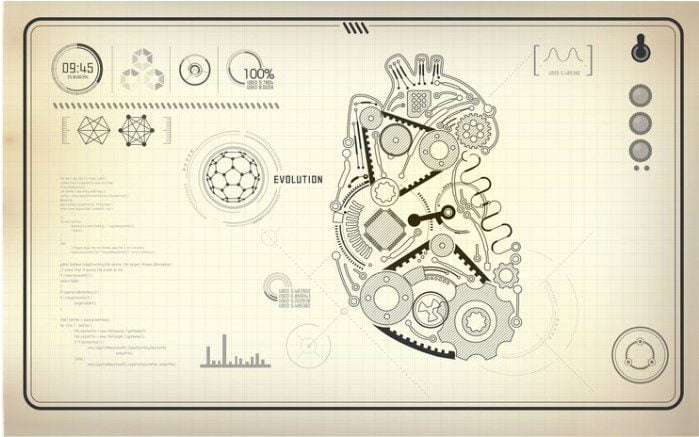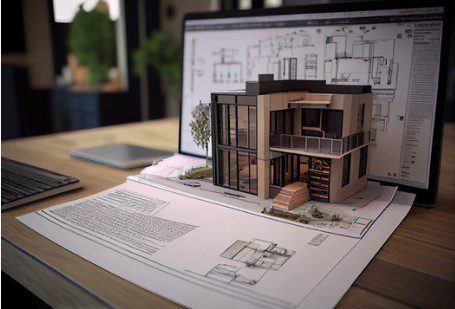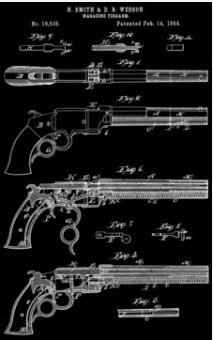In the fast-paced world of innovation, securing intellectual property rights through patents is paramount for inventors and businesses. A crucial aspect of the patent application process is the creation of patent drawings, which visually represent the invention’s key elements. These drawings play a pivotal role in conveying complex ideas to patent examiners, attorneys, and the […]

Introduction
In the ever-evolving landscape of intellectual property and innovation, patent drawings hold a crucial role as visual representations of novel inventions. These drawings not only protect intellectual property but also serve as a means to convey complex ideas and designs to patent examiners, competitors, and the public. As technology advances and industries evolve, the design and techniques used in patent drawings are also changing. In this post, we’ll explore the emerging trends in patent drawing design and techniques that reflect the shifting needs of inventors and the demands of the modern intellectual property landscape.
1. Integration of 3D Modeling
One of the most notable trends in patent drawing design is the integration of 3D modeling techniques. With the advancement of computer-aided design (CAD) software and the availability of 3D printing technology, inventors are increasingly using 3D representations to convey the intricacies of their inventions.
Benefits:
- Enhanced clarity and depth: 3D models provide a more realistic view of the invention, offering a comprehensive understanding of its structure and functionality.
- Improved visualization: Patent examiners and stakeholders can better visualize the invention, making it easier to assess its novelty and utility.
Examples: Inventions that involve complex geometries, such as medical devices, automotive components, or consumer electronics, often benefit from 3D modeling to convey their design and operation more effectively.
2. Interactive Digital Patent Drawings
The digitization of patent drawings has opened doors to new possibilities for interactivity. Inventors and patent professionals can now create digital patent drawings that allow users to interact with the design, zoom in on specific elements, and view cross-sections or exploded views with the click of a button.
Benefits:
- Enhanced engagement: Interactive patent drawings provide a more engaging and informative experience for patent examiners, attorneys, and the public.
- Improved examination: Examiners can explore complex inventions in greater detail, leading to more thorough examinations.
Examples: Interactive digital patent drawings are particularly useful for inventions with intricate, layered, or modular designs, such as medical instruments, mechanical devices, or electronic circuits.
3. Use of Augmented Reality (AR) and Virtual Reality (VR)
Augmented reality and virtual reality are making their way into the world of patent drawings. These technologies allow inventors to create immersive, three-dimensional experiences that bring patent drawings to life.
Benefits:
- Realistic visualization: AR and VR allow patent stakeholders to experience the invention as if it were physically present, leading to better comprehension.
- Collaboration and training: Invention teams, patent examiners, and legal professionals can collaborate and train with more immersive and interactive patent drawings.
Examples: AR and VR are becoming particularly useful for inventions in fields like architecture, aviation, and virtual simulations, where realistic representation is critical.
4. Incorporation of Automation and Artificial Intelligence (AI)
Automation and artificial intelligence are transforming the creation of patent drawings. AI can analyze text descriptions and automatically generate corresponding visual representations, saving time and reducing errors.
Benefits:
- Efficiency: AI-powered tools can produce patent drawings more quickly and accurately, expediting the patent application process.
- Cost savings: Automated drawing generation can reduce the costs associated with hiring illustrators and draftspersons.
Examples: AI is beneficial for inventions that have standardized components or repetitive elements, such as chemical structures or electrical circuits.
5. Enhanced Collaboration Tools
With the growing trend of remote work and global collaboration, patent drawings are evolving to support more efficient and collaborative workflows. Cloud-based platforms and collaboration tools enable multiple stakeholders to work on patent drawings simultaneously and provide real-time feedback.
Benefits:
- Global collaboration: Inventors, patent attorneys, and illustrators can work together seamlessly, regardless of their geographical locations.
- Streamlined communication: Collaboration tools improve communication and reduce the risk of misunderstandings during the patent drawing process.
Examples: These tools are valuable for inventions developed by international teams or for patent applications filed across multiple jurisdictions.
6. Increased Emphasis on User-Centered Design
As the importance of design patents continues to grow, there is a heightened focus on user-centered design in patent drawings. These drawings prioritize the aesthetic and ornamental aspects of inventions, ensuring they are visually appealing and can stand alone as works of art.
Benefits:
- Competitive edge: A well-designed patent drawing can add value to an invention by making it more appealing to consumers.
- Effective protection: Design patents are crucial for products with distinctive aesthetics, such as fashion, consumer electronics, or home décor.
Examples: User-centered design is often employed for inventions with strong aesthetic components, where the visual appeal is a significant part of the innovation.
Conclusion
The world of patent drawing design and techniques is undergoing a profound transformation, driven by technological advancements, changing patent examination practices, and the need for more effective communication of complex inventions. As we embrace emerging trends such as 3D modeling, interactive digital drawings, augmented and virtual reality, automation, and user-centered design, we not only safeguard intellectual property but also elevate the way we convey and comprehend innovations. These trends reflect a dynamic intellectual property landscape, where the visual representation of inventions continues to be at the forefront of technological progress and innovation protection.
In the realm of innovation, securing intellectual property rights is paramount. Utility patents, which grant inventors exclusive rights to their inventions, are a crucial tool for protecting groundbreaking ideas. Central to the process of obtaining a utility patent is the creation of precise and comprehensive utility patent drawings. These drawings serve as visual representations of […]
The Perils of DIY Patent Drawings While the prospect of saving money by creating your patent drawings might seem tempting, there are significant perils associated with the DIY (Do-It-Yourself) approach when it comes to patent drawings. Here are some of the key perils you should be aware of: Lack of Expertise: One of the most […]
In the dynamic and competitive landscape of innovation, securing a utility patent is often a critical step for inventors and businesses. A utility patent grants exclusive rights to an inventor, safeguarding their inventive concepts from unauthorized use. Among the essential components of a utility patent application, patent drawings stand out as indispensable tools. In this […]
In the realm of intellectual property protection, securing a patent is a significant step for inventors and innovators. Part of the patent application process involves creating detailed and accurate patent drawings to accompany the technical description of the invention. While traditional hand-drawn sketches were once the norm, the advent of technology has introduced Computer-Aided Design […]
When it comes to protecting your intellectual property (IP), the options can seem overwhelming. Utility design patents, trademarks, and copyrights are all valuable tools, but they serve different purposes and protect different aspects of your creations. In this article, we’ll explore the distinctions between utility design patents, trademarks, and copyrights, helping you make informed decisions […]

